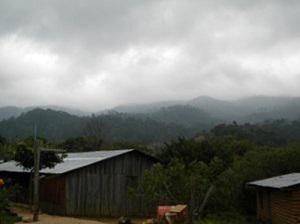Constanza Monterrubio Solis
The aim of the project is to explore the potential contribution of the different IUCN governance categories of protected areas to biodiversity conservation, using Chiapas State, Mexico, as a case study.

Resin extraction in San Miguel.
This project is concerned with understanding the implementation of alternative forms of protected areas governance and their potential and constraints for contributing to the conservation of priority habitats. The process of understanding governance has a great role in contributing to social, technological and ecological processes that are able to achieve both sustainability and social justice. The study is located in Mesoamerica, specifically in Chiapas, Mexico a region historically characterised by high bio-cultural diversity, land-tenure conflicts, political turmoil, and indigenous marginalisation and unrest. The diverse land tenure arrangements of indigenous communities, ejidos, private owners and the establishment of State protected areas have created a mosaic of governance arrangements with different outcomes in social and biodiversity conservation terms.

Community Conserved Area, San Miguel Chimalapa.
This project is divided in two stages. First, it will quantify the coverage of conservation priority areas within the Mesoamerican Biological Corridor in Chiapas (a) by different categories of current state-recognised protected areas and (b) by state, private or community land tenure systems. Then, it will evaluate the effectiveness of different types of state-recognised protected areas and different forms of land tenure outside the protected areas system in terms of forest cover change.
In the second stage, this project will analyse the interactions between the State and local managers of the different types of protected areas governance arrangements present in Chiapas and their implications in terms of:
-Bureaucratic requirements, local institutions and capacity of state and non-state actors to bridge the two.
-Technical approaches to natural resource management versus traditional or local knowledge and practice.
-Centralisation/decentralisation within the state system and the implications for the above.
Both stages aim to inform the development of successful multi-governance protected areas landscapes including communal and private forms of land tenure in order to meet the targets for conservation of priority habitats in Chiapas, Mexico. Furthermore, the outcomes of this research will inform international policy debates on the role and practical implementation of private reserves and Indigenous Community Conserved Areas.